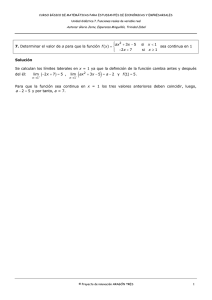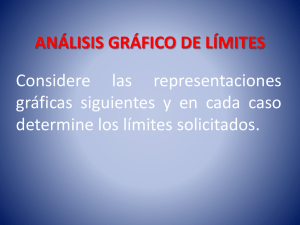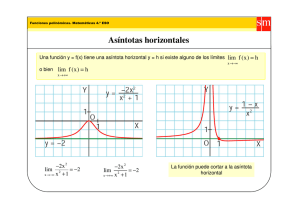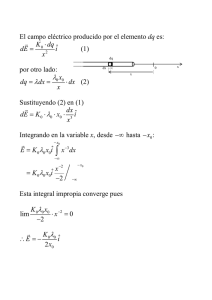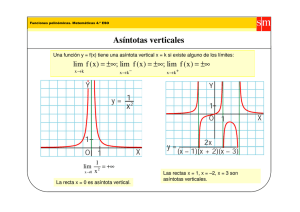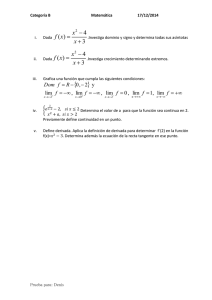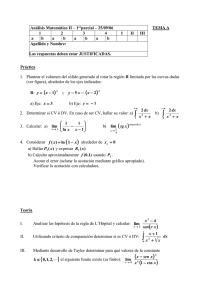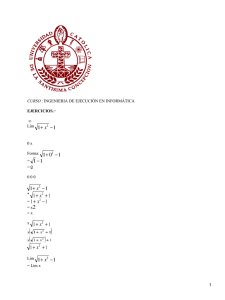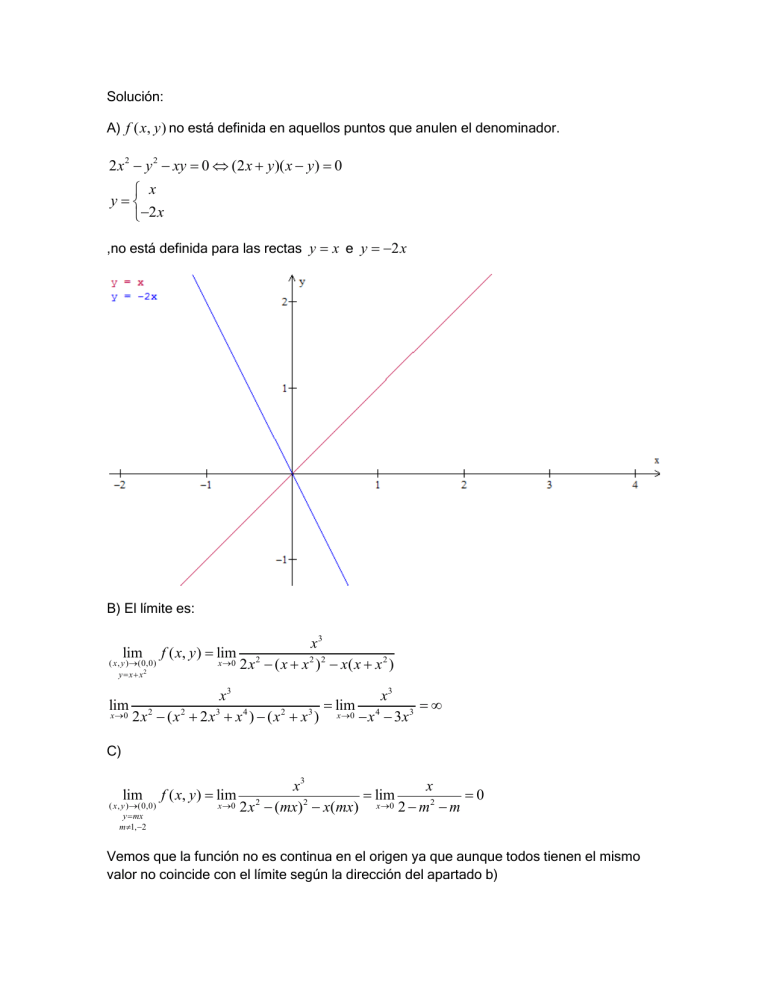
Solución: A) f ( x, y ) no está definida en aquellos puntos que anulen el denominador. 2 x 2 y 2 xy 0 (2 x y )( x y ) 0 x y 2 x ,no está definida para las rectas y x e y 2 x B) El límite es: lim ( x , y ) (0,0) y x x2 x3 f ( x, y ) lim 2 x 0 2 x ( x x 2 ) 2 x ( x x 2 ) x3 x3 lim x 0 2 x 2 ( x 2 2 x 3 x 4 ) ( x 2 x 3 ) x 0 x 4 3 x 3 lim C) lim ( x , y ) (0,0) y mx m 1, 2 x3 x lim 0 2 2 x 0 2 x ( mx) x( mx) x 0 2 m 2 m f ( x, y ) lim Vemos que la función no es continua en el origen ya que aunque todos tienen el mismo valor no coincide con el límite según la dirección del apartado b) Por no ser continua, tampoco puede ser diferenciable, ya que toda función diferenciable en un punto debe ser continua en él. D) las derivadas parciales son: t3 2 f (t , 0) f (0, 0) 1 lim 2t > f x (0, 0) lim t 0 t 0 t t 2 Para calcular f y (t , 0) f y (0, 0) > f yx (0, 0) lim t 0 t Primero calcularemos f y (0, 0) y f y (t , 0) > f y (0, 0) lim t 0 f (0, t ) f (0, 0) 00 lim 0 t 0 t t x3 (2 y x) (2 x 2 y 2 xy)2 > f y ( x, y) > f y (t , 0) t 3 (20 t ) t4 1 2 2 2 4 (2t 0 (t )(0)) 4t 4 Ahora, > f yx (0, 0) lim f y (t , 0) f y (0, 0) t 0 t 1/ 4 0 t 0 t lim luego no existe f yx (0, 0) E) En P (2, 1) , f ( x, y ) es diferenciable, ya que se trata de una función racional con denominador no nulo. Podemos por tanto calcular, f x ( x, y ) 2 x 4 3x 2 y 2 2 x3 y (2 x 2 y 2 xy ) 2 f x (2, 1) > u cos Du f (2, 1) f (2, 1), u 25 3 4 2 23 4 81 9 3 ,sin 1 3 , 3 2 2 x 3 (2 y x) f y ( x, y ) (2 x 2 y 2 xy ) 2 8(2 2) f y (2, 1) 0 81 4 1 3 Du f (2, 1) , 0 , , 9 2 2
